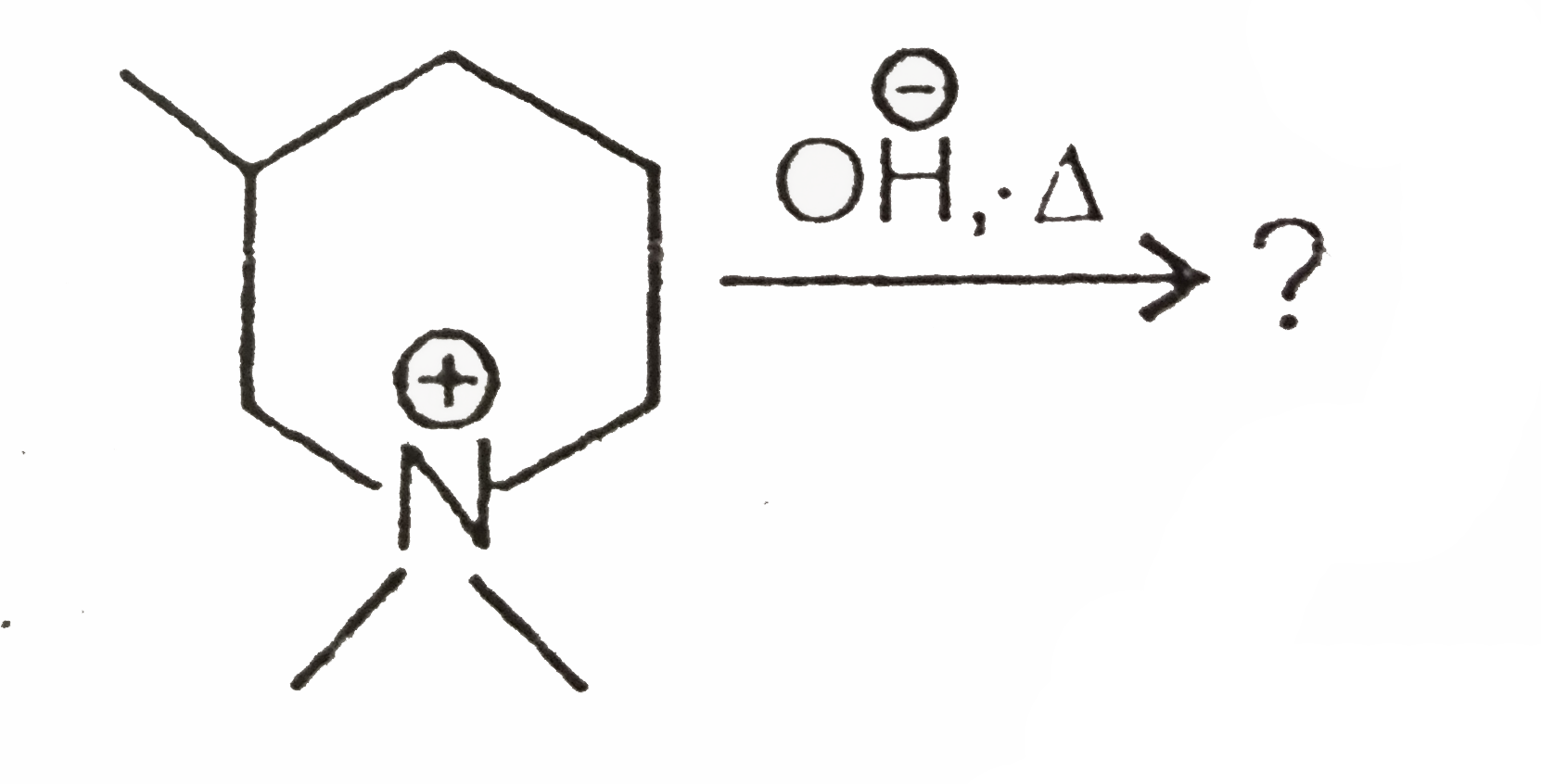Carbylamine reaction.
Step-by-Step Solution for Carbylamine Reaction
Step 1: Identify the Reactants
- The carbylamine reaction involves a primary amine. For this example, we will use ethylamine (CH₃CH₂NH₂).
- The other reactants required are chloroform (CHCl₃) and a strong base, such as potassium hydroxide (KOH).
Step 2: Reaction Setup
- The reaction is set up by mixing ethylamine with chloroform in the presence of a strong base. The stoichiometry requires three moles of base for every mole of chloroform.
Step 3: Formation of Electrophile
- When chloroform reacts with KOH, it generates a dichlorocarbene (CCl₂), which acts as an electrophile in the reaction.
Step 4: Nucleophilic Attack
- The lone pair of electrons on the nitrogen atom of the primary amine (ethylamine) attacks the electrophilic carbon of the dichlorocarbene (CCl₂). This forms an intermediate compound with a positive charge on nitrogen and a negative charge on the carbon.
Step 5: Rearrangement
- A hydrogen atom from the nitrogen shifts to the carbon, leading to the formation of a compound with a double bond between nitrogen and carbon, resulting in an intermediate with the structure CH₃CH₂N⁺=CCl₂.
Step 6: Elimination of Chlorine
- The nitrogen donates its lone pair to form a double bond with carbon, and one of the chlorine atoms leaves as a leaving group. This results in the formation of a compound with a double bond (CH₃CH₂=N=CCl).
Step 7: Formation of Isocyanide
- The reaction continues with the addition of another base (KOH), which abstracts a hydrogen atom from the nitrogen, resulting in a neutral nitrogen atom and the formation of a triple bond between carbon and nitrogen (isocyanide).
Step 8: Final Product
- The final product of the reaction is isocyanide (CH₃CH₂N≡C), along with the release of potassium chloride (KCl) and hydrogen gas (H₂) as by-products.
Summary of the Reaction
- Ethylamine + Chloroform + KOH → Isocyanide (Ethyl isocyanide) + KCl + H₂
- The carbylamine reaction involves a primary amine. For this example, we will use ethylamine (CH₃CH₂NH₂).
- The other reactants required are chloroform (CHCl₃) and a strong base, such as potassium hydroxide (KOH).
- The reaction is set up by mixing ethylamine with chloroform in the presence of a strong base. The stoichiometry requires three moles of base for every mole of chloroform.
- When chloroform reacts with KOH, it generates a dichlorocarbene (CCl₂), which acts as an electrophile in the reaction.
- The lone pair of electrons on the nitrogen atom of the primary amine (ethylamine) attacks the electrophilic carbon of the dichlorocarbene (CCl₂). This forms an intermediate compound with a positive charge on nitrogen and a negative charge on the carbon.
- A hydrogen atom from the nitrogen shifts to the carbon, leading to the formation of a compound with a double bond between nitrogen and carbon, resulting in an intermediate with the structure CH₃CH₂N⁺=CCl₂.
- The nitrogen donates its lone pair to form a double bond with carbon, and one of the chlorine atoms leaves as a leaving group. This results in the formation of a compound with a double bond (CH₃CH₂=N=CCl).
- The reaction continues with the addition of another base (KOH), which abstracts a hydrogen atom from the nitrogen, resulting in a neutral nitrogen atom and the formation of a triple bond between carbon and nitrogen (isocyanide).
- The final product of the reaction is isocyanide (CH₃CH₂N≡C), along with the release of potassium chloride (KCl) and hydrogen gas (H₂) as by-products.
- Ethylamine + Chloroform + KOH → Isocyanide (Ethyl isocyanide) + KCl + H₂
Topper's Solved these Questions
Similar Questions
Statement 1: Amines are less basic than alcohols.
Statement-2: Secondary amines give carbylamine reactions.
Statement-3: in Hofmann-bromide reaction amide is converted to amines with same number of carbon atom.
View SolutionAmines are basic in nature and show many types of reactions such as substitution, Hoffmann elimination, carbylamine, acylation, diazotisation etc.

X is same as
View SolutionAmines are basic in nature and show many types of reactions such as substitution, Hoffmann elimination, carbylamine, acylation, diazotisation etc.
What is the major alkene formed in the following Hoffmann elimination?

View SolutionAmines are basic in nature and show many types of reactions such as substitution, Hoffmann elimination, carbylamine, acylation, diazotisation etc.
Certain nitrogeneous compound with molecular mass 180 shows an increase in its molecular mass to 348 after treatment with acetyl chloride. The number of possible -NH2 groups in the molecule is...................
View SolutionDistinction between pairs of compounds
Aniline and N, N-dimethylaniline
1. Carbylamine test.
2. Reaction with Hinsberg's reagent.
View SolutionDistinction between pairs of compounds
Aniline and N, N-dimethylaniline
1. Carbylamine test.
2. Reaction with Hinsberg's reagent.
View SolutionDistinction between pairs of compounds
Aniline and N, N-dimethylaniline
1. Carbylamine test.
2. Reaction with Hinsberg's reagent.
View SolutionCarbylamine test is given by........amines.
View SolutionCarbylamine test is performed in alcoholic KOH by heating a mixture of:
View SolutionMatch the following :
(i) Carbylamine - Surcose
(ii) Disaccharide - Complex
(iii) Cannot be prepared easily from precipitate - Obnoxious smell
(iv) Sequence of elementary reactions - Irreversible colloid
View Solution